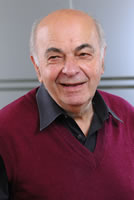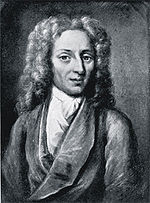Norm at Normblog has a post defending theology as a legitimate area of academic inquiry, after an attack on theology by Oliver Kamm. (Since OK’s post is behind a paywall, I have not read it, so my comments here may be awry with respect to that post.) Norm argues, very correctly, that it is legitimate for theology, considered as a branch of philosophy to, inter alia, reflect on the properties of entities whose existence has not yet been proven. In strong support of Norm, let me add: Not just in philosophy!
In business strategy, good decision-making requires consideration of the consequences of potential actions, which in turn requires the consideration of the potential actions of other actors and stakeholders in response to the first set of actions. These actors may include entities whose existence is not yet known or even suspected, for example, future competitors to a product whose launch creates a new product category. Why, there’s even a whole branch of strategy analysis, devoted to scenario planning, a discipline that began in the military analysis of alternative post-nuclear worlds, and whose very essence involves the creation of imagined futures (for forecasting and prognosis) and/or imagined pasts (for diagnosis and analysis). Every good air-crash investigation, medical diagnosis, and police homicide investigation, for instance, involves the creation of imagined alternative pasts, and often the creation of imaginary entities in those imagined pasts, whose fictional attributes we may explore at length. Arguably, in one widespread view of the philosophy of mathematics, pure mathematicians do nothing but explore the attributes of entities without material existence.
And not just in business, medicine, the military, and the professions. In computer software engineering, no new software system development is complete without due and rigorous consideration of the likely actions of users or other actors with and on the system, for example. Users and actors here include those who are the intended target users of the system, as well as malevolent or whimsical or poorly-behaved or bug-ridden others, both human and virtual, not all of whom may even exist when the system is first developed or put into production. If creative articulation and manipulation of imaginary futures (possible or impossible) is to be outlawed, not only would we have no literary fiction or much poetry, we’d also have few working software systems either.


 Nicolas Fatio de Duillier (1664-1753) was a Genevan mathematician and polymath, who for a time in the 1680s and 1690s, was a close friend of Isaac Newton. After coming to London in 1687, he became a
Nicolas Fatio de Duillier (1664-1753) was a Genevan mathematician and polymath, who for a time in the 1680s and 1690s, was a close friend of Isaac Newton. After coming to London in 1687, he became a